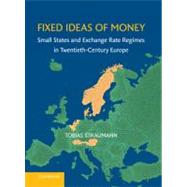
Note: Supplemental materials are not guaranteed with Rental or Used book purchases.
Purchase Benefits
What is included with this book?
| List of Figures | p. xi |
| List of Tables | p. xv |
| Preface | p. xvii |
| Introduction | p. 1 |
| The Interwar Years | p. 21 |
| Early Divergence | p. 24 |
| The Return to Prewar Parity | p. 61 |
| Fear of Experiments | p. 94 |
| Dissolution of the Gold Bloc | p. 126 |
| After Bretton Woods | p. 171 |
| Fixed versus Floating | p. 175 |
| Hard and Soft Pegs | p. 214 |
| The Swiss Exception | p. 276 |
| Floating in the North | p. 308 |
| Conclusion | p. 343 |
| Bibliography | p. 347 |
| Index | p. 385 |
| Table of Contents provided by Ingram. All Rights Reserved. |
The New copy of this book will include any supplemental materials advertised. Please check the title of the book to determine if it should include any access cards, study guides, lab manuals, CDs, etc.
The Used, Rental and eBook copies of this book are not guaranteed to include any supplemental materials. Typically, only the book itself is included. This is true even if the title states it includes any access cards, study guides, lab manuals, CDs, etc.